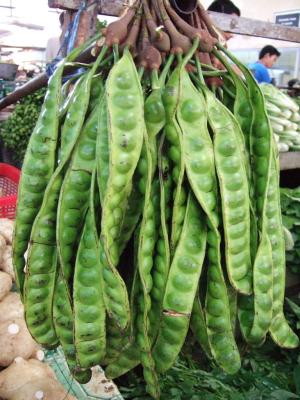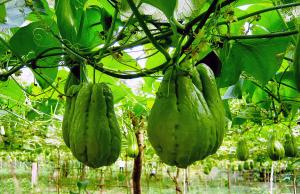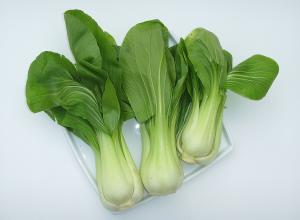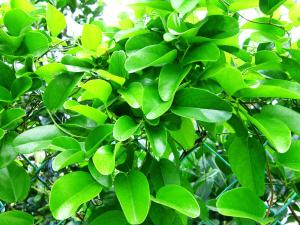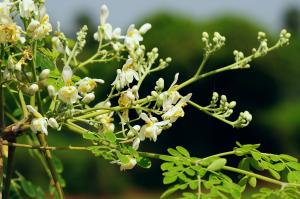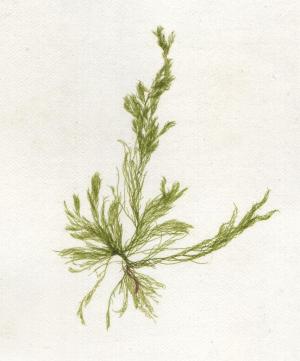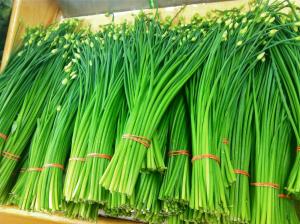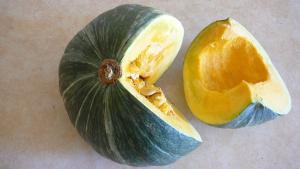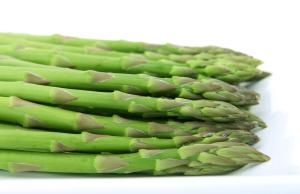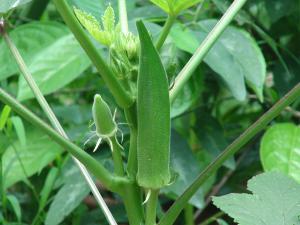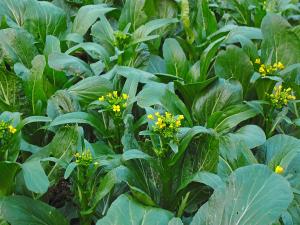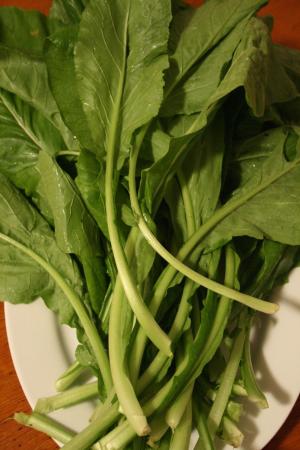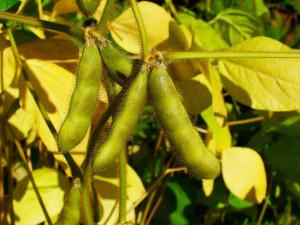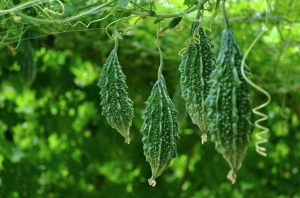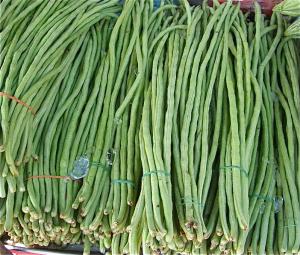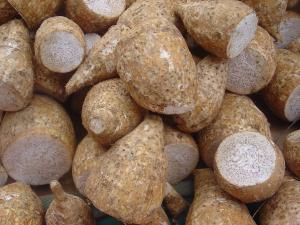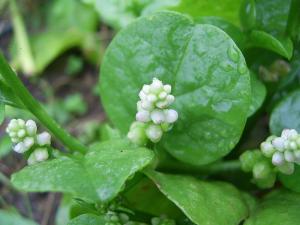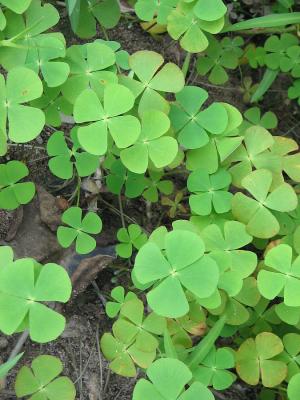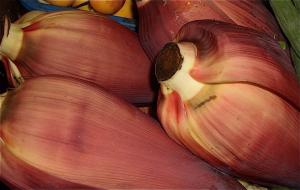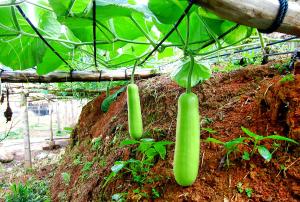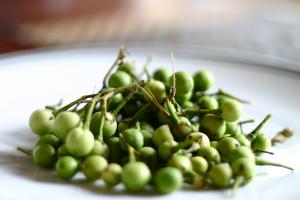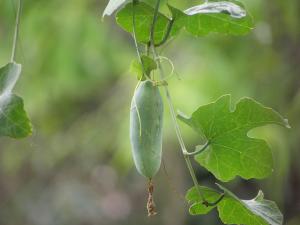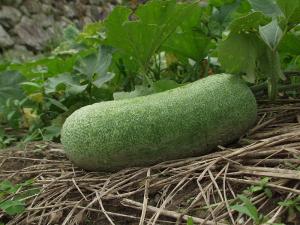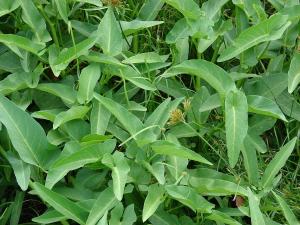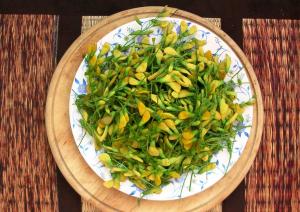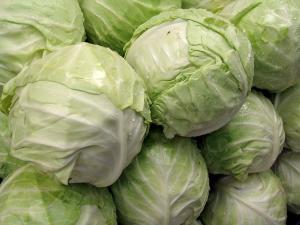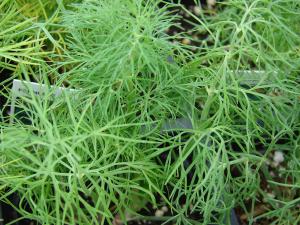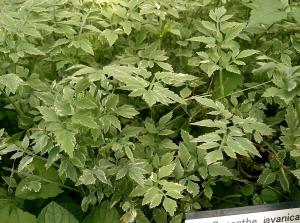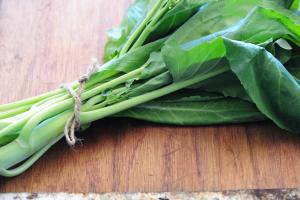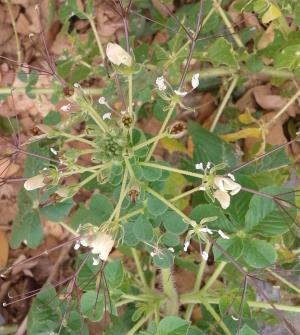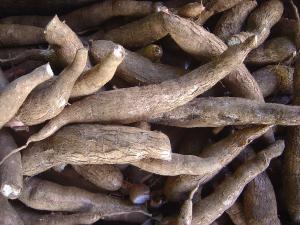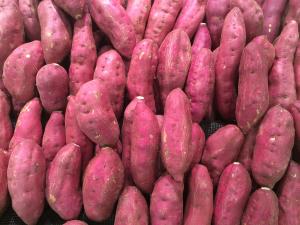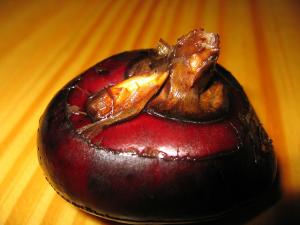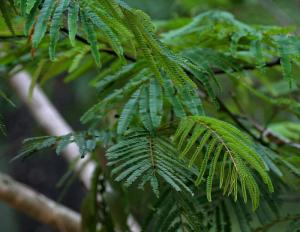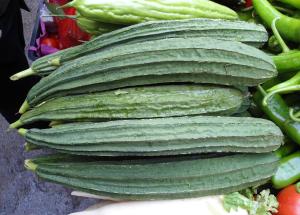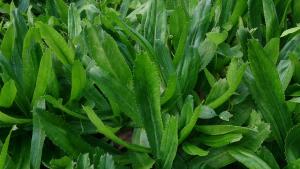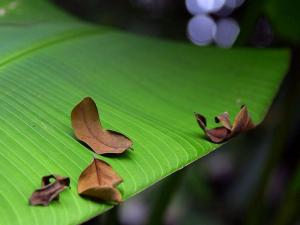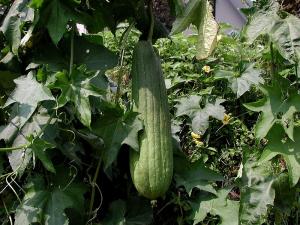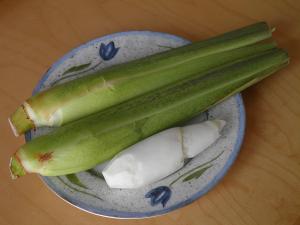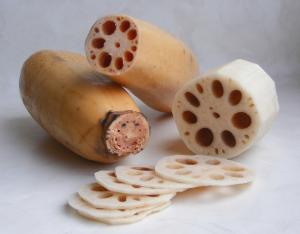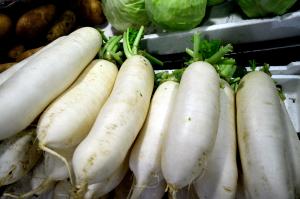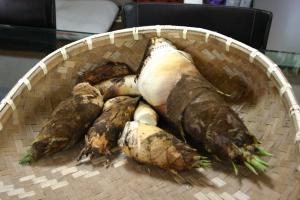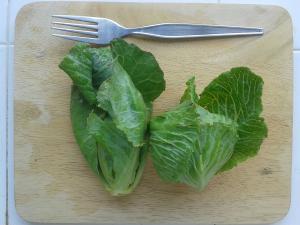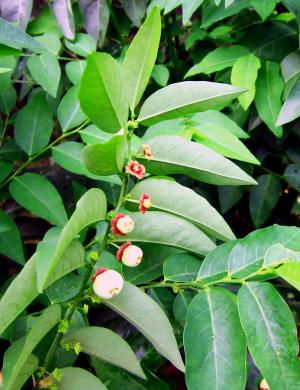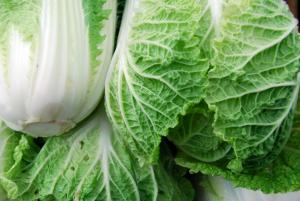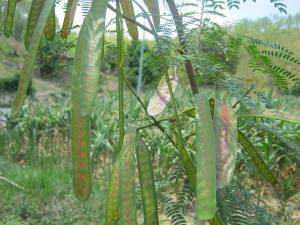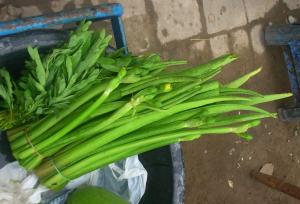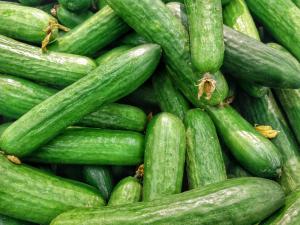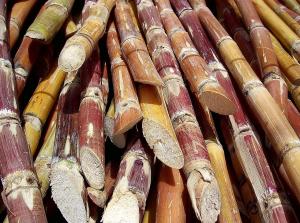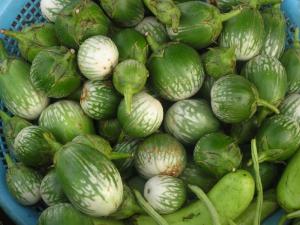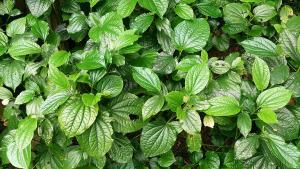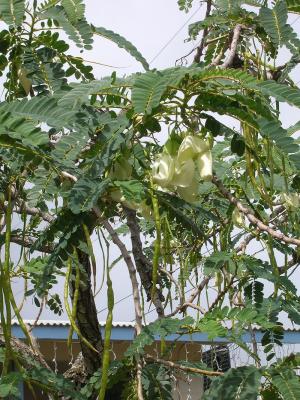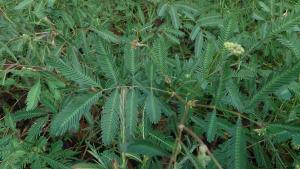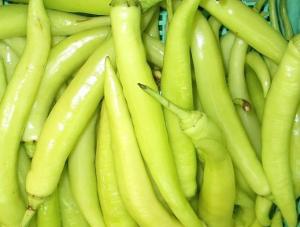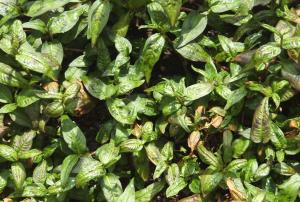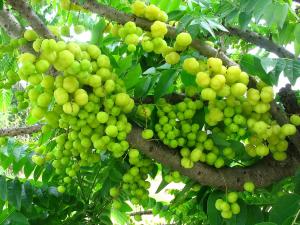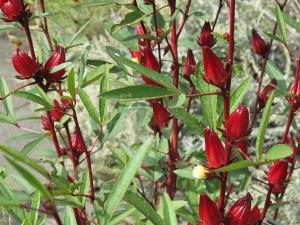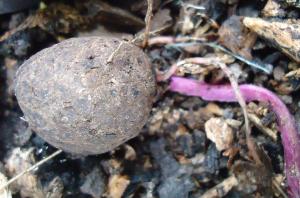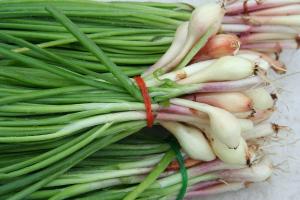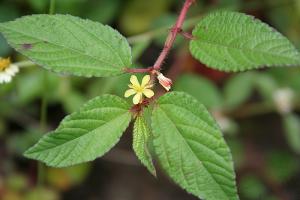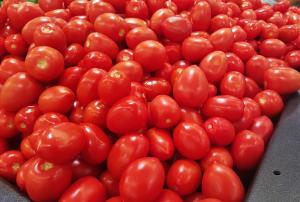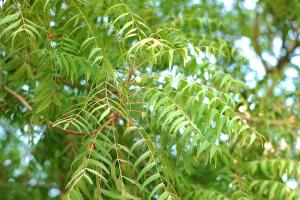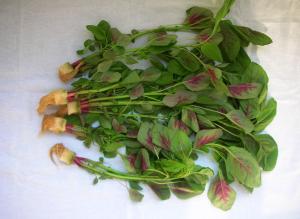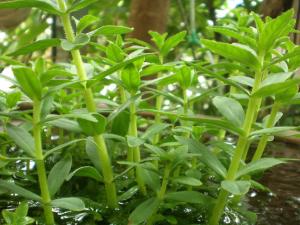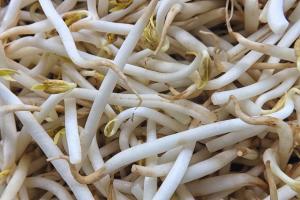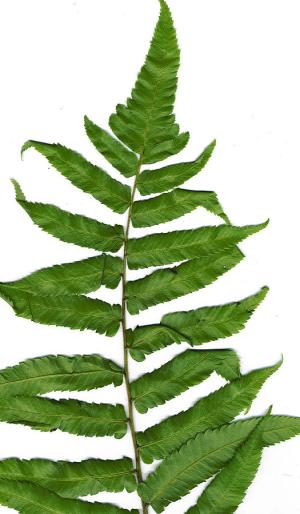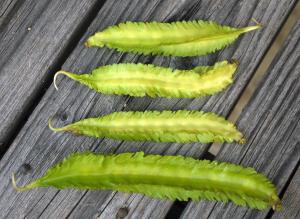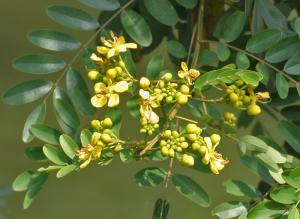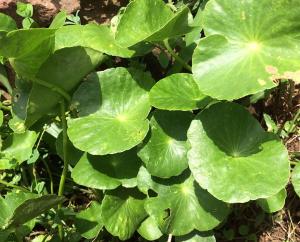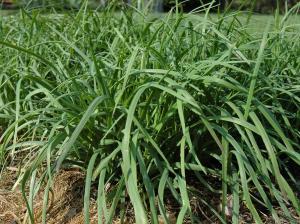Thai Vegetables
Parkia speciosa, petai, sataw, sator, sadtor, sa-dtor, bitter bean, twisted cluster bean, stink bean
The seeds of the Parkia speciosa (inside the pods) are usually eaten in stir fries.
Used mainly in Thai-Chinese soups and stir-fries, this vegetable is known under several names in Thailand. Besides the aforementioned, it can also be called phak kat hongte (Thai: ผักกาด ฮ่องเต้), phak kwantung hongte (Thai: ผักกวางตุ้งฮ่องเต้ ), and phak kwantung Hong Kong (Thai:... more
In the Lao Isan culture of northeastern Thailand, the leaves are used in the preparation of kaeng no mai (Thai: แกงหน่อไม้, sometimes called kaeng Lao (Thai: แกงลาว)), after the ethnic Lao majority of northeastern Thailand, is a chili-hot tasting soup contained bamboo shoots, chilis, salt, and... more
Many parts of moringa are edible, with regional uses varying widely:
- Immature seed pods, called "drumsticks"
- Leaves
- Mature seeds
- Oil pressed from seeds
- Flowers
In Laos, Cladophora spp. (ໄຄ [kʰáj] "river weed" or more precisely ໄຄຫີນ [kʰáj hǐːn] "rock river weed") are commonly eaten as a delicacy and usually known in English under the name "Mekong weed". The algae grow on underwater rocks and thrive in clear spots of water... more
Literally meaning "European bamboo shoot", green asparagus is used mainly in vegetable stir-fries.
The products of the plant are mucilaginous, resulting in the characteristic "goo" or slime when the seed pods are cooked; the mucilage contains soluble fiber. Pods are cooked, pickled, eaten raw, or included in salads. Okra may be used in developing countries to mitigate malnutrition... more
Asian mustard greens are most often stir-fried or pickled.
The small variety is most often eaten raw with Nam phrik. Popular is Tom chuet mara (Thai: ต้มจืดมะระ): bitter gourd in a clear broth, often stuffed with minced pork.
Asparagus bean, Yardlong bean, bora, bodi, long-podded cowpea, asparagus bean, pea bean, snake bean, Chinese long bean
The crisp, tender pods are eaten both fresh and cooked. They are at their best when young and slender. They are sometimes cut into short sections for cooking uses.
They are a good source of protein, vitamin A, thiamin, riboflavin, iron, phosphorus, and potassium, and a very good source... more
Usually boiled pieces are an ingredient of a variety of desserts. Slices of deep fried taro are also popular as a snack.
Basella alba is a fast-growing, soft-stemmed vine, reaching 10 metres (33 ft) in length. Its thick, semi-succulent, heart-shaped leaves have a mild flavour and mucilaginous texture. It is rich in vitamins A and C, iron and calcium. It has been shown to contain certain phenolic phytochemicals and... more
Banana flowers can be eaten raw, e.g. Yam hua pli (a spicy salad with thinly sliced banana flowers), or steamed with a Nam phrik (chilli dip). It can also feature in Som tam, in soups or deep-fried, as in Thot man huapli. The taste of the steamed flowers is somewhat similar to that of artichokes... more
calabash, bottle gourd, white-flowered gourd, Lagenaria siceraria, opo squash, long melon, suzza melon, New Guinea bean, Tasmania bean
Like other members of the Cucurbitaceae family, gourds contain cucurbitacins that are known to be cytotoxic at a high concentration. The tetracyclic triterpenoid cucurbitacins present in fruits and vegetables of the cucumber family are responsible for the bitter taste, and could cause ulcers in... more
This pea sized eggplant is often used in curries and is indispensable in Nam phrik kapi, a chilli dip containing shrimp paste, where it is used raw.
Tindora (Luuk Tum Loong in Thai) is boiled and eaten with dipping sauce or stir-fried. They resemble cucumbers but are only 1-2 inches long. They can be found in Indian markets.
Used in stir-fries, soups.
The large variety (Phak bung chin) is mostly eaten stir-fried or in soup. The small variety (Phak bung na) is generally served raw with Som tam or with Nam phrik.
These small yellow flowers are eaten stir-fried, in omelette or in sweets such as in Khanom dok sano.
In Thai cuisine, cabbage is often served raw on the side with Thai salads such as som tam or lap, steamed or raw with nam phrik, or boiled in soups and curries.
Fresh dill is used mainly in certain soups and in curries from north-eastern Thailand which do not contain coconut milk. It literally means "coriander from Laos" in Thai.
Eaten in soups, curries, stir-fries and also raw. This is one of the vegetables known as Phak chi lom, the other is Trachyspermum roxburghianum.
The leaves are a popular food item fermented with rice water as Phak sian dong pickle.
A popular traditional cassava-based dish is Chueam (Thai: เชื่อม), a candied starchy dessert. The tubers are also used for making tapioca pearls used in desserts and drinks.
Man thet (literally meaning "foreign tuber") is popularly also known as man daeng (Thai: มันแดง; "red tuber"); boiled pieces are eaten as a snack or used as an ingredient for desserts.
The water chestnut is not a nut at all, but an aquatic vegetable that grows in marshes, under water, in the mud. It has stem-like, tubular green leaves that grow to about 1.5 m. The water caltrop, which also is referred to by the same name, is unrelated and often confused with the water chestnut... more
Young feathery leaves of the Acacia pennata tree which are used in omelettes, soups and curries. In Northern Thai cuisine they are also eaten raw as for instance with Tam mamuang, a green mango salad.
A herb often seen in spicy soups and Northern curries. It literally means "European coriander", perhaps because it was brought from the Caribbean to Thailand by Europeans.
When used as a way of wrapping food, it is known as bai tong (ใบตอง). When used for steaming dishes such as Ho mok pla, it also imparts a subtle flavour.
Used in stir-fries, in curries and in Kaeng type soups.
This vegetable has been grown for at least 400 years. It is popular for its flavor and tender texture, and it is eaten raw or cooked. It stays crisp when stir-fried. The main harvesting season is between September and November. This is also typhoon season in parts of Asia, a time when many other... more
Shoots, young leaves and flowers of the tree are eaten raw with Nam phrik. Popular in Isan.
The sprouts that come up from the roots after the main cabbage has been harvested
Literally "white cabbage", it is often eaten in soups and stir-fried dishes but also raw, sliced very thin, with certain spicy noodle soups or raw with Nam phrik.
Eaten in soups, curries and stir-fries. Popular in Isan. It is popularly known as Phak phai (Thai: ผักพาย), not to be confused with Phak phai (Thai: ผักไผ่), the leaves of Persicaria odorata, another type of edible leaf.
Typical Thai cucumbers are small. Eaten raw with Nam phrik or as a Som tam ingredient.
Sugarcane, or sugar cane, are several species of tall perennial true grasses of the genus Saccharum, tribe Andropogoneae, native to the warm temperate to tropical regions of South Asia and Melanesia, and used for sugar production. It has stout, jointed, fibrous stalks that are rich in the sugar... more
About the size of a ping pong ball, these eggplants are used in curries or stir-fries, but they are also eaten raw with Nam phrik (Chilli dips).
This plant is a perennial herb with creeping rhizomes, and a striped stem that grow to 40 cm high. Its leaves are thin, heart-shaped, and 8–10 cm long and 8–11 cm wide, with 5 main veins from the base of the blade, oil glands on the upper surface, and finely pubescent veins on its under side.... more
The flowers of the Sesbania grandiflora are often eaten steamed with Nam phrik or used in certain curries such as kaeng som.
Usually eaten raw with Nam phrik. Popular in Isan.
Very large, mild tasting pale-green peppers which can be found in certain stir fried dishes or deep fried stuffed with, for instance, pork.
Otaheite gooseberry, Malay gooseberry, Tahitian gooseberry, country gooseberry, star gooseberry, starberry, West India gooseberry, Phyllanthus acidus
Various parts of the plant are used for food.
In Thailand, roselle is generally drunk as a cool drink, and it can be made into a wine.
Purple yam is used in a variety of desserts, as well as a flavor for ice cream, milk, Swiss rolls, tarts, cookies, cupcakes, cakes and other types of pastries. In the Philippines, it is known as ube and is often eaten boiled, baked, or as a sweetened pudding called ube halayá; the latter is a... more
served raw on the side with Pad Thai
The leaves are eaten blanched as a dish with khao tom kui (plain rice congee). The taste resembles that of spinach and samphire.
Literally meaning "foreign eggplant", it is used in salad such as Som tam, as an ingredient in stir-fries such as in Thai fried rice, but also cooked to a thick sauce as in the chilli paste Nam phrik ong.
The leaves and flowers of the neem tree (Azadirachta indica) are eaten blanched, often with Nam phrik.
Used in salads and in soups like Tom chap chai and Tom kha mu. Mostly hybrids are offered in the market. The red-leafed Amaranth is known as Phak khom bai daeng (Thai: ผักขมใบแดง)
It is often eaten in soups and stir-fried dishes. Thais tend to eat bean sprouts raw to semi-raw, for instance in Phat Thai noodles where it is either sprinkled on top of the finished dish raw or added into the pan for one quick stir before serving
This plant has medicinal value and it contains a compound named Barakol. The leaves, tender pods and seeds are edible, but they must be previously boiled and the water discarded. They are used in Burmese and also in Thai cuisine where one of the most well-known preparations is Kaeng khilek (Thai... more
Closer in flavour to garlic than onions. Used to season cooking and is used in stir fries such as pad Thai. Comes in green and yellow varieties.
